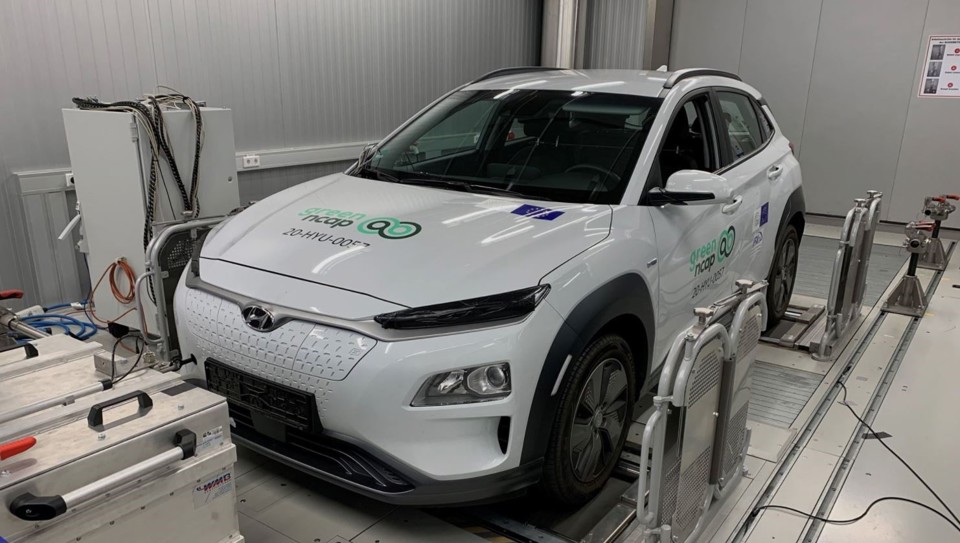Green NCAP has published the results from its latest round of testing, which highlights the most environmentally sustainable new cars on sale.
Of the 24 cars tested, the electric models achieved the highest scores, with Hyundai’s Kona and the Renault Zoe both scoring five stars.
The Toyota C-HR achieved three and a half stars thanks to its hybrid technology. The similarly-powered Honda CR-V Hybrid was awarded two and a half stars.
The three popular superminis – the VW Polo, Renault Clio and Peugeot 208 – are all rated as three-star vehicles. At the other end of the scale, the large people-carriers – VW Transporter, Mercedes-Benz V-Class and Opel Zafira – get no better than one and a half stars, mainly because of their weight and poorer aerodynamics.
While very effective after-treatment means they control pollutant emissions well, they require a lot of energy – fuel - to move their weight around. The SUVs emerge little better than the vans with, on average, just over two stars.
In the large family car class, the Mercedes-Benz C220d gets three stars while the BMW 320d and VW Passat 2.0 TDI get two and a half stars apiece. The Mercedes, in particular, impressed with its control of pollutant emissions which, while nowhere near the zero tailpipe emissions of electric cars, nevertheless demonstrated what can be done with good engine design and exhaust after-treatment.
Niels Jacobsen, CEO of International Consumer Research and Testing and president of Euro NCAP, said: "Green NCAP's rating scheme has been comprehensively overhauled and now also includes an evaluation of Greenhouse Gas Emissions as well as Clean Air and Energy Efficiency.
“As we measure only tailpipe emissions, electric cars naturally come out best in this round of assessments. However, Green NCAP will continue to evolve and we plan to include well-to-wheel emission measures and, ultimately, life-cycle analysis as a baseline for future ratings.
“With our current ratings, hybrid cars have obvious opportunities to score better than non-hybrids, but they don't always do that as manufacturers may decide to reduce costs by omitting simple but effective exhaust after-treatment devices such as particulate filters. Such lost opportunities are revealing and disheartening.
“Among combustion engine cars, the best performers are smaller cars, mounted with effective exhaust after-treatment where hybrid technology can give them an extra notch up in the ratings."
No plug-in hybrids are included in this round of tests but the first will be included the next round, expected in February of next year. Going forward, Green NCAP plans to further extend its analysis from 'tank to wheel' to 'well to wheel' and take account of the 'upstream' emissions involved in the manufacture of fuels or in the generation of electricity. For the time being, the Green NCAP's 2020 ratings are still based on 'tank to wheel' even though the recent update to the methodology and inclusion of new measurements means that the ratings are significantly different to those published in 2019 and should not be compared.
Overview of all November 2020 results:
| Audi A4 | 2 | stars | Peugeot 2008 | 3 | stars | |
| BMW 3-Series | 2½ | stars | Peugeot 208 | 3 | stars | |
| Dacia Duster | 2½ | stars | Peugeot 3008 | 2½ | stars | |
| Honda CR-V | 2½ | stars | Renault Captur | 3 | stars | |
| Hyundai KONA | 5 | stars | Renault Clio | 3 | stars | |
| Jeep Renegade | 2 | stars | Renault ZOE | 5 | stars | |
| Kia Sportage | 1½ | star | SEAT Ibiza | 3 | stars | |
| Mazda CX-5 | 2 | stars | Suzuki Vitara | 2½ | stars | |
| Mercedes-Benz C-Class | 3 | stars | Toyota C-HR | 3½ | stars | |
| Mercedes-Benz V-Class | 1½ | star | VW Passat | 2½ | stars | |
| Nissan Qashqai | 2½ | stars | VW Polo | 3 | stars | |
| Opel/Vauxhall Zafira Life | 1½ | star | VW Transporter | 1½ | star |















Login to comment
Comments
No comments have been made yet.